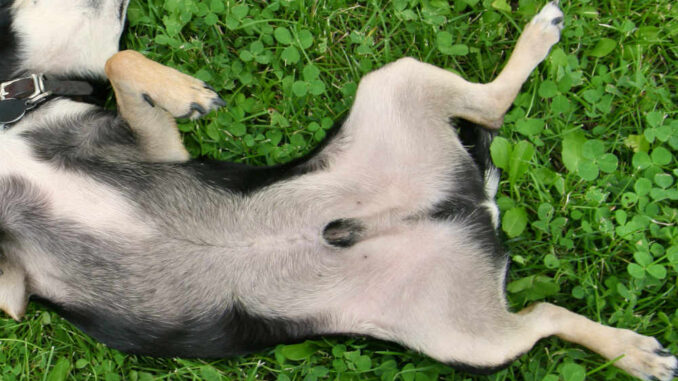
This article was updated on June 22nd, 2024

Neutering, aka castration, is a surgical procedure where the reproductive glands (testes) are removed surgically from a male dog. Most neutered dogs are easy to spot because they will not have testicles and a small scrotum. In this article, we will first review pictures of neutered dogs – and then discuss the pros and cons of the surgery.
What neutered dogs look like [with pictures]
Let’s review pictures of neutered dogs. Notice the lack of testicles and underdevelopment of the scrotum:
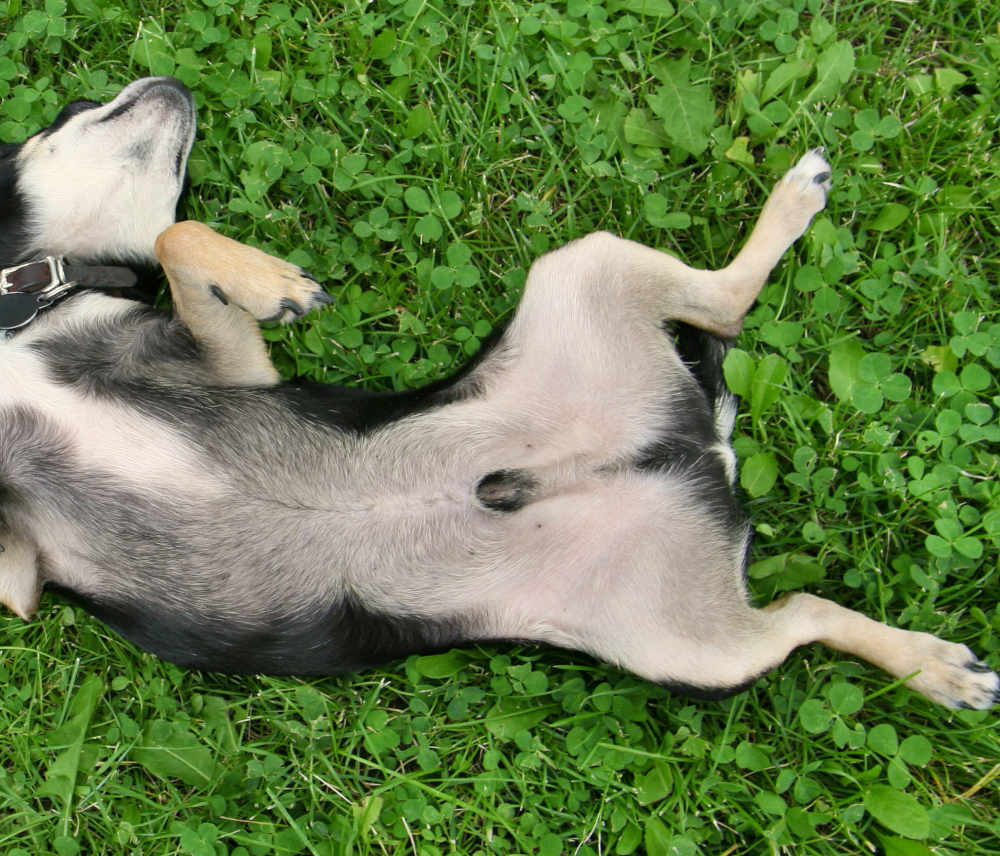
This is a Beagle that has been neutered:
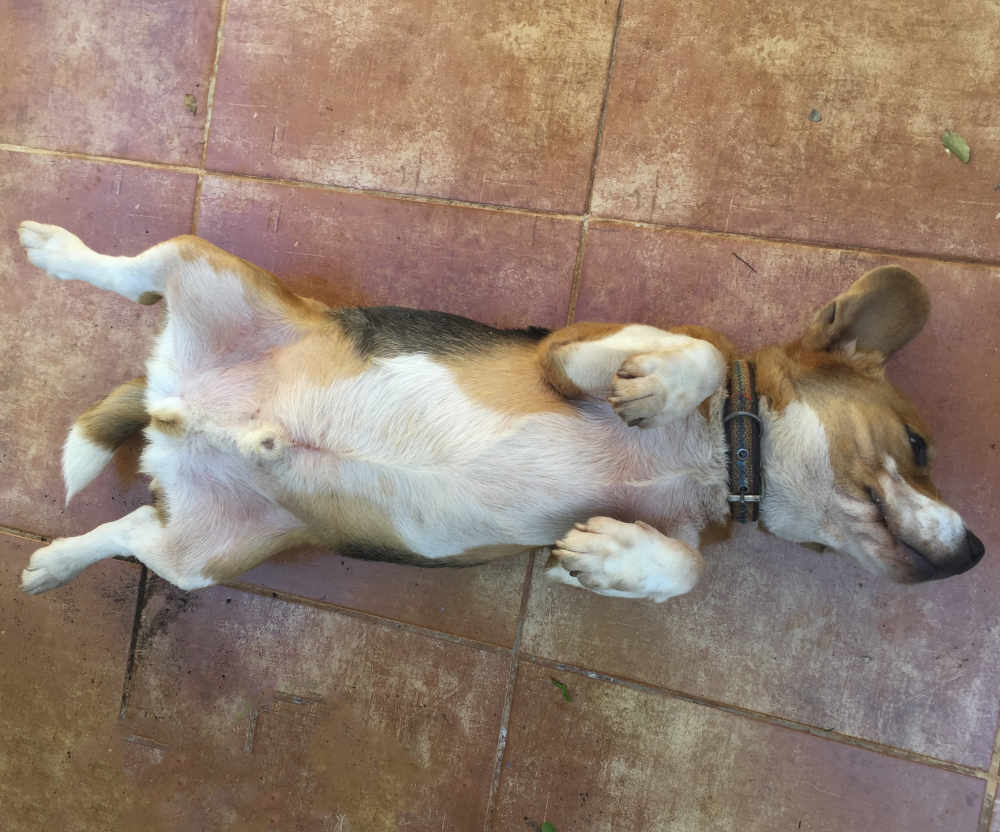
Neutered Boston Terrier:
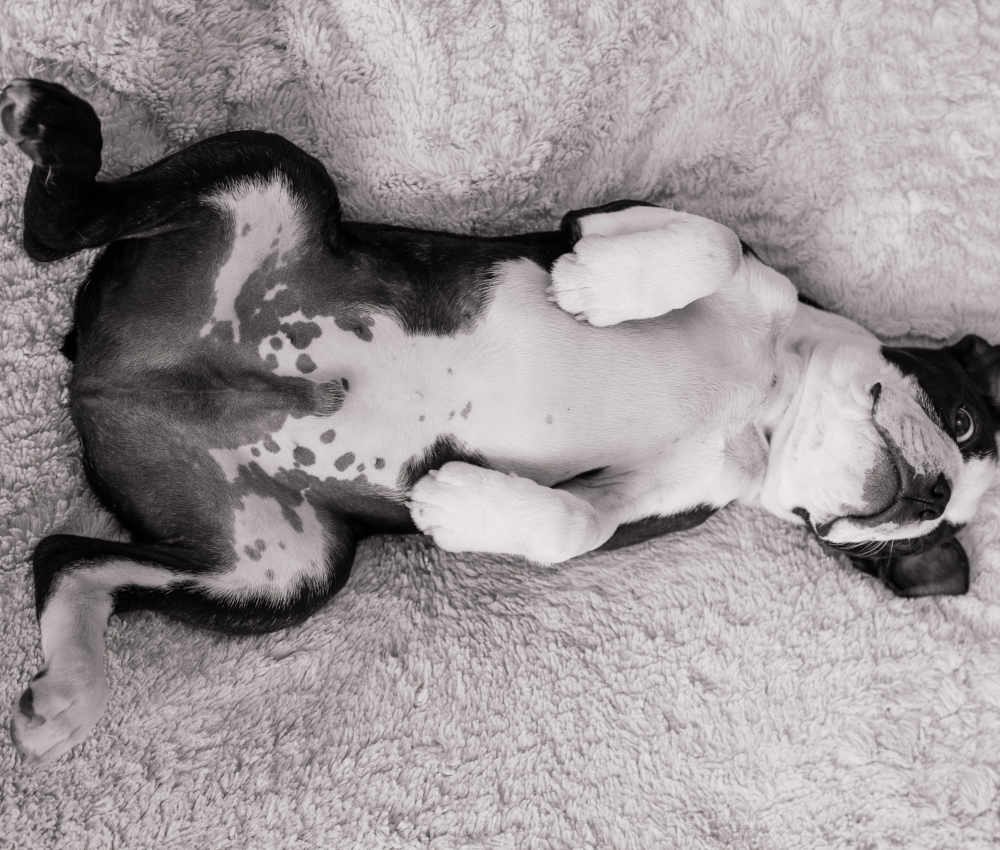
Picture of a dog who has NOT been neutered
In contrast, this English bulldog, lying on back and stretched out, has NOT been neutered:
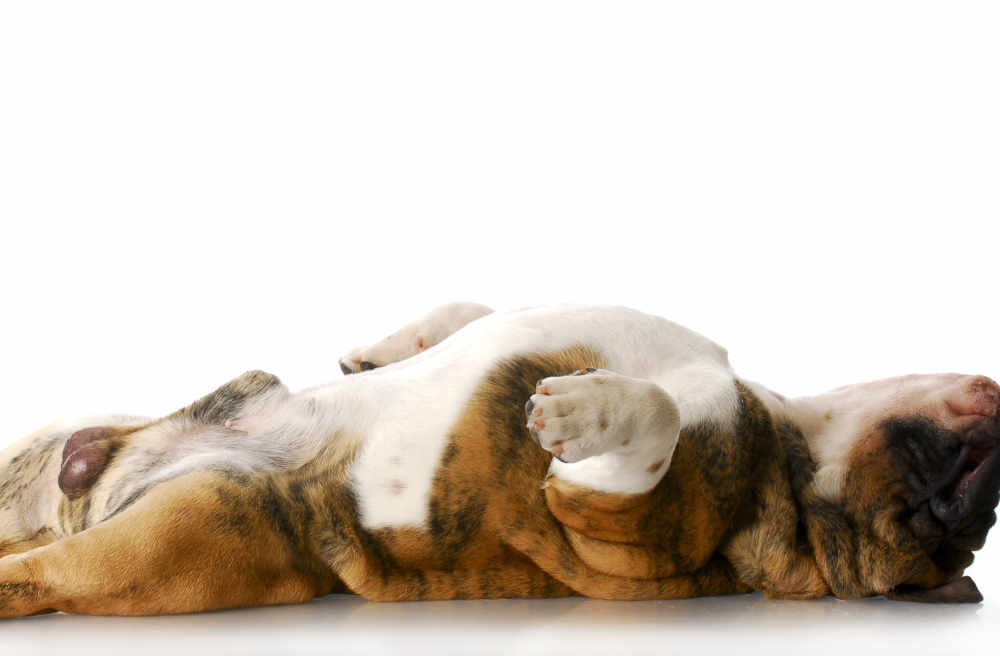
Picture of an incision after neutering surgery
If surgery and recovery go smoothly, most dogs heal within 14 days without any significant complications. Below is a photo of a healed neuter site:
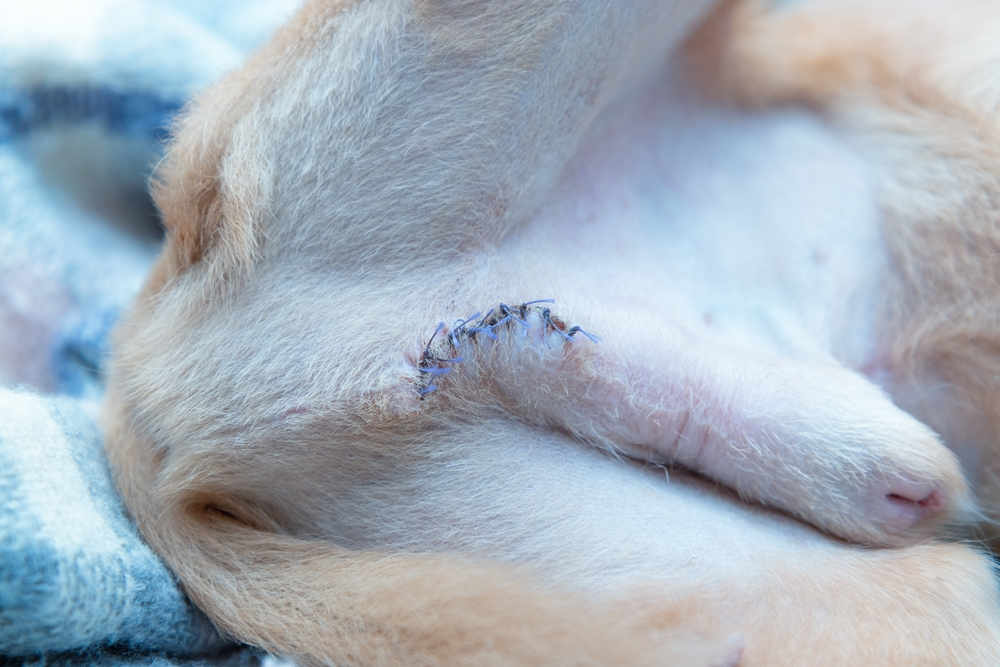
Neutered male dogs often have a surgical scar or a tattoo on the abdomen
Most neutered dogs are easy to spot because they will not have testicles and a small scrotum. If you are unsure, you may also be able to see a surgical scar in their pubic region. Some veterinarians will also tattoo dogs after surgery. This is usually marked as a thin colored line on the abdomen.
Neutering surgery & recovery phase
Below are photos of dogs who are being neutered by a veterinary surgeon:
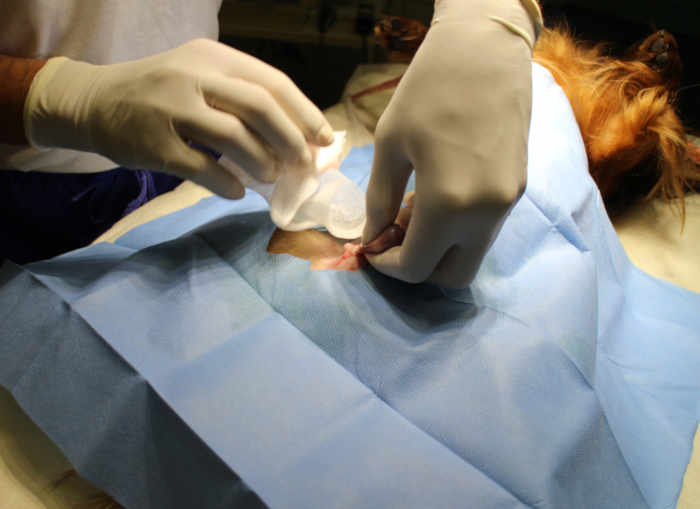
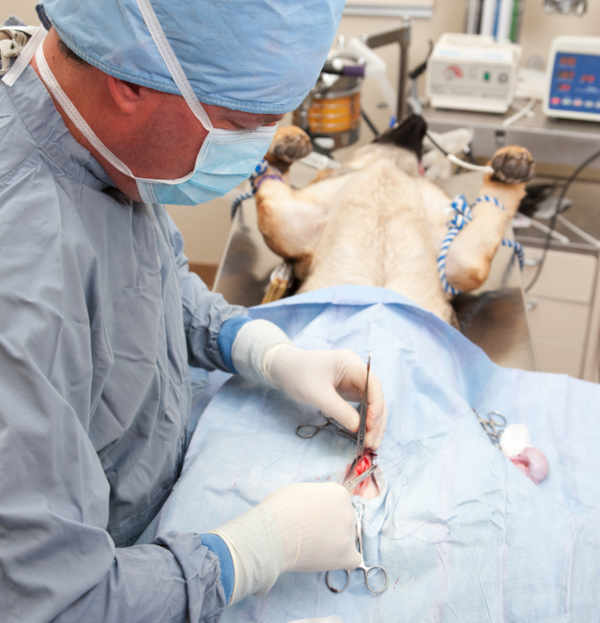
In the picture below, the veterinarian neutered the dog and is now sewing the incision:
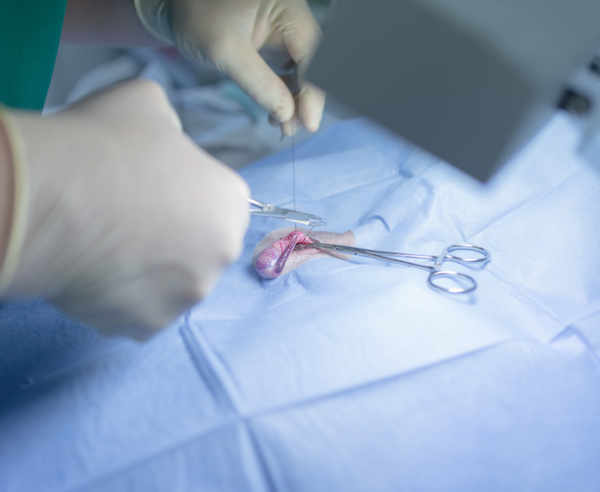
Pros and cons of the surgery
Neutering surgeries are performed to prevent dogs from being able to reproduce or display unwanted sexual behaviors. There are pros and cons to every elective surgical procedure. While neutering is commonplace in the US, there is much controversy surrounding the practice. Let’s look at the benefits and disadvantages.
Benefits
- Inability to reproduce – this contributes to the initiative of population control and decreased risk of unwanted mating/pregnancy.
- Prevention of reproductive diseases – surgery eliminates the risk of testicular cancers, and prostatic hyperplasia, and decreases the risk of prostatic infections
- Elimination of unwanted sexual behaviors – Neutered males will not be interested in female dogs in heat. They are less likely to mount other dogs, urine mark, and roam.
- Decreased roaming – males are less likely to roam to find female dogs in the neighborhood
- Reduction in certain forms of aggression – this will reduce male on male aggressive over a potential mate
- Greater longevity – neutered dogs live longer than intact males
Disadvantages
- Weight gain – neutering can cause a decrease in metabolic rate, so owners need to be diligent to prevent weight gain
- Potential for increased anxiety or aggression – some studies found neutered dogs were more likely to have aggression or anxiety but other studies refuted this claim
- Cancer – there is speculation that premature neutering can increase the risk of certain cancers like prostatic carcinoma, osteosarcoma, and hemangiosarcoma – cause and effect have not been proven
- Orthopedic disease – cruciate ligament injuries and hip dysplasia are more common in neutered males
Key characteristics of a neutering surgery
Many owners are not accustomed to what are expected changes after neuter surgery. Included are photos of normal post-operative changes in the early recovery period.
Bruising: This amount of bruising is not uncommon, nor worrisome, in the first few days after surgery:
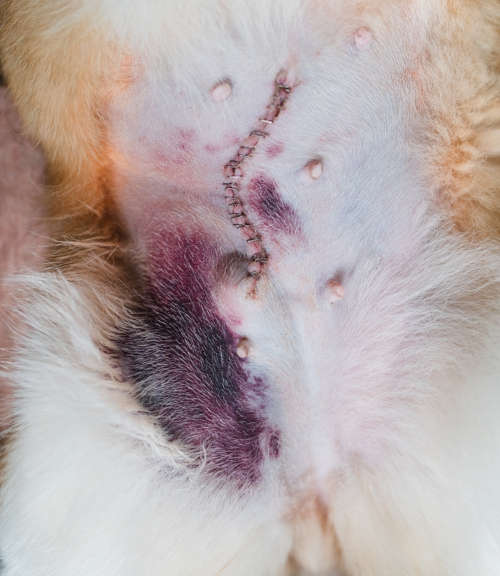
Swelling: Mild to moderate swelling may be expected after surgery. This can become more pronounced in dogs that are not kept calm.
Scabbing: scabbing is a normal part of wound healing. A scab is expected to form over the surgical site. Normal post-operative oozing may form a small tan scab as shown below:

Issues and risks (abnormal incisions) after neutering surgery
Minor complications after surgery include mild swelling, minor bleeding, or a slight infection at the incision site (in about 5-20% of cases). Serious issues such as severe bleeding, significant infection, or adverse reactions to anesthesia are less common, occurring in approximately 1-5% of cases.
Post-surgical complications may include:
Scrotal hematoma: This is when the scrotum fills with blood and becomes extremely swollen. Most dogs will still heal, but some dogs will need another surgery to resolve the swelling.
Incision infection: Neuter incisions can become infected. This is most often caused by dogs licking and chewing their incision after surgery. You can read our article: Pictures Of Dog Incision Infections to view pictures or read our article: Signs of Infections and Complications After Neutering a Dog.
Incision dehiscence: This is a photo from Beattie Pet Hospital of a dog that had surgery and the incision is dehisced. This most commonly occurs secondary to self-trauma or incision infection.
7 steps you can take at home to help your dog
- Veterinarian’s instructions – Lack of owner compliance in the post-operative phase is a big reason why pets develop surgery complications. Follow your discharge instructions closely.
- Strict rest after surgery – Excessive activity will cause excessive swelling and potential failure of the surgery site to heal.
- E-collar/cone at ALL times – After surgery, dogs should wear their cone at all times to prevent licking and chewing of the surgical site.
- Pain medication – Appropriate pain medication will help keep your dog as comfortable as possible
- Mental stimulation – Dogs will go stir-crazy being confined for the 2-week healing period. Consider mental stimulation with puzzle toys or low-impact training activities.
- Clean and dry incisions – No bathing is allowed after surgery until sutures are removed. Keep the incision free of dirt/mud. Do not apply ointments or topical treatments.
- Sedation – Very active young dogs may need help to remain calm for the 2 weeks after surgery. Talk to your veterinarian about sedation options.
Disclaimer: This website's content is not a substitute for veterinary care. Always consult with your veterinarian for healthcare decisions. Read More.


Be the first to comment